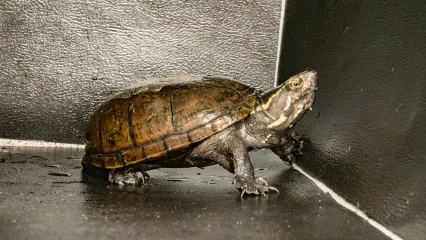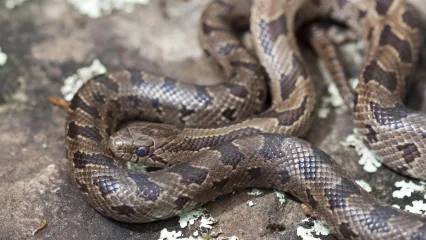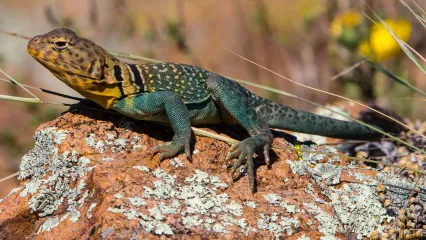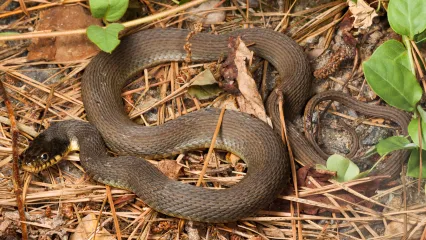
Description
Stinkpots are small aquatic turtles that can easily be distinguished by a combination of the position of stripes on the head and neck and structure of the plastron. Two yellowish (white in juveniles) stripes extend from the tip of the nose the full length of the head and neck. The top stripe passes just above the eye and the bottom stripe passes just below the eye. The background color of the head is nearly black. The plastron differs from all other turtles by having skin between the scutes. The carapace of adults is usually smooth, but juveniles have a slight ridge down the midline. The carapace is dark brown to black with no markings in adults. Juveniles often have light spots on the bottom edge of each marginal scute. Similar to Mississippi mud turtles, western snapping turtles, and alligator snapping turtles, stinkpots cannot pull themselves completely into their shells.
Size
Large adult stinkpots reach slightly less than five and one-half inches in carapace length. Males are smaller than females. Hatchlings are less than one inch in carapace length.
Habitat
Stinkpots occur in across southeastern and northeastern Oklahoma. In North America, the west-east distribution extends from south-central Texas across the entire eastern United States. The north-south distribution extends from northern Pennsylvania and southern Canada to the tip of the Florida peninsula.
Life Cycle
Stinkpots are usually found in ponds or roadside ditches that have soft bottoms and aquatic vegetation. They forage in the muck on the bottom and in aquatic vegetation where they feed on a combination of aquatic insects, crawfish, carrion, and aquatic vegetation. Mating likely occurs in spring, and females produce a single clutch of 1-4 eggs. Because the reproductive season is long (late April through July), individual females may produce more than a single clutch each season. Eggs are deposited in shallow nests or under surface objects and communal nesting often occurs. Males can reach sexual maturity in four years, although most reach sexual maturity in 5-7 years. Females can reach sexual maturity in as little as five years but most reach sexual maturity in 6-8 years. Natural life span can exceed thirty years. Stinkpots get their name by the fact that they produce terrible-smelling chemicals when disturbed.
How To Observe
These common turtles are most easily observed by seining or dip-netting in ponds, roadside ditches, or other bodies of water that are filled with vegetation and have soft-muddy bottoms. They rarely bask.
(This profile was created by Dr. Laurie Vitt as part of a partnership between the Wildlife Department and the Sam Noble Oklahoma Museum of Natural History. It was funded as part of a larger State Wildlife Grant to survey and inventory amphibians and reptiles of the Wildlife Management Areas of Oklahoma: T-35-P-1.)


